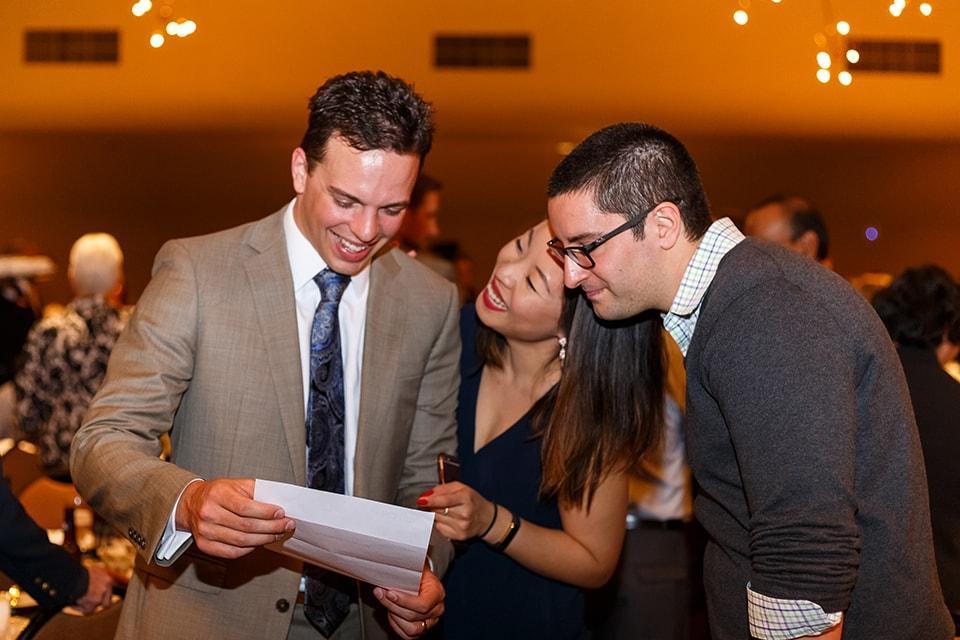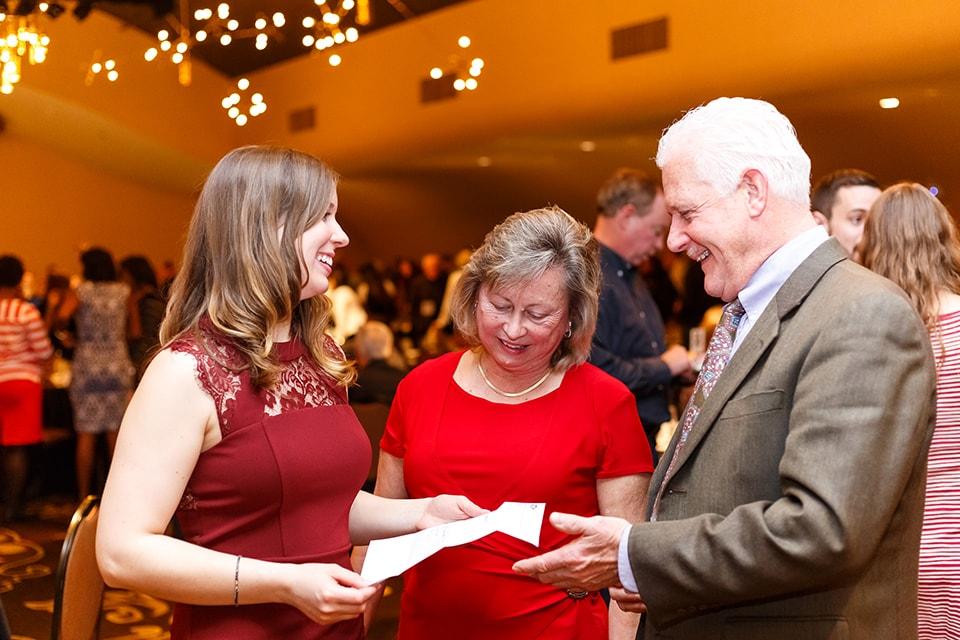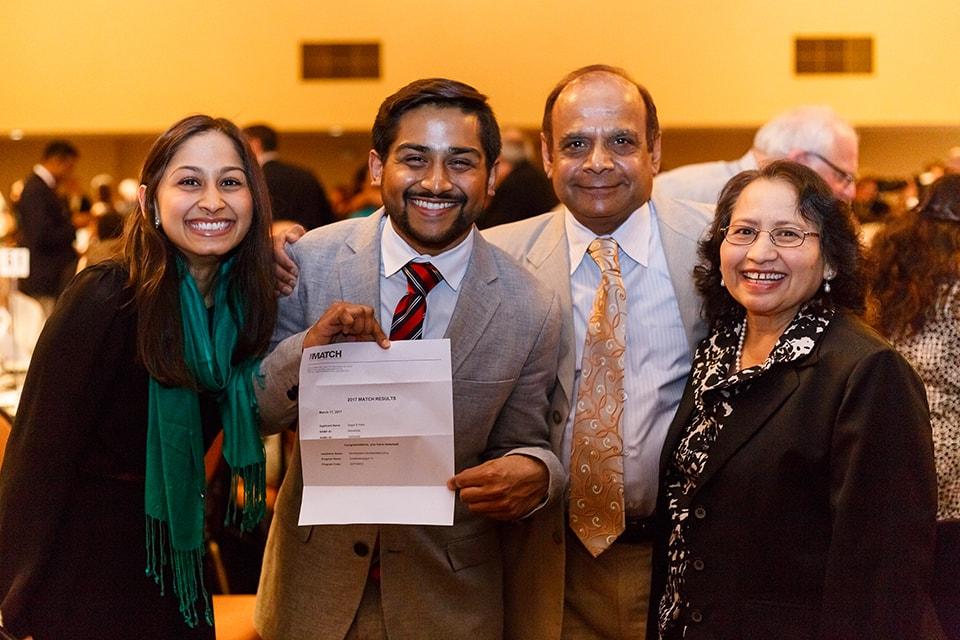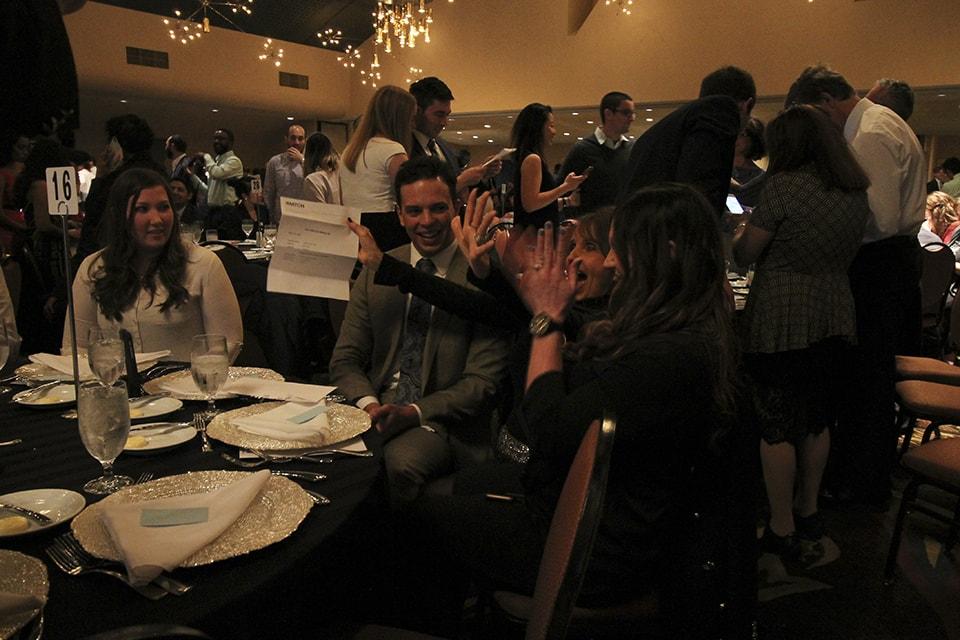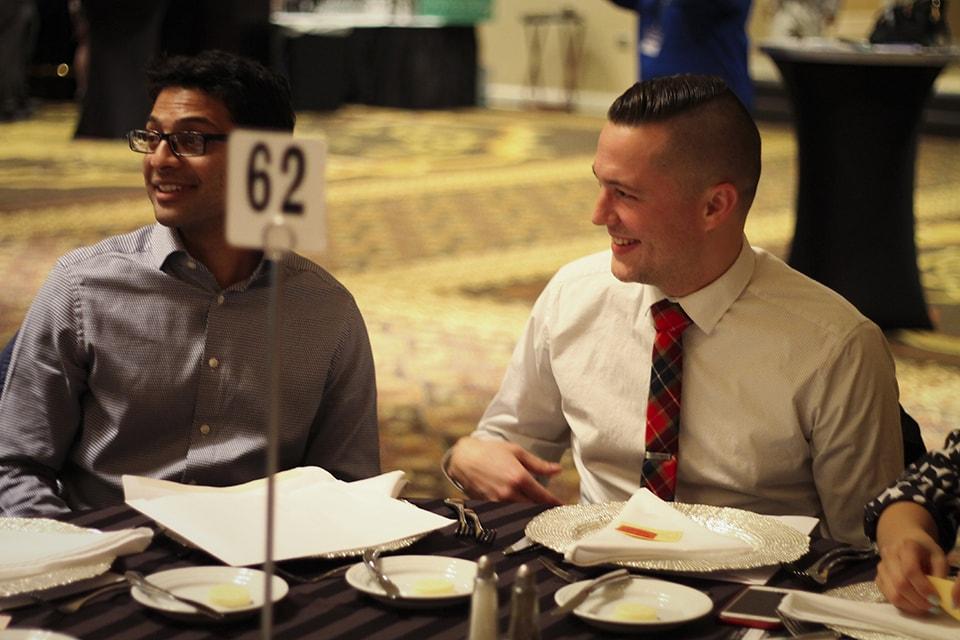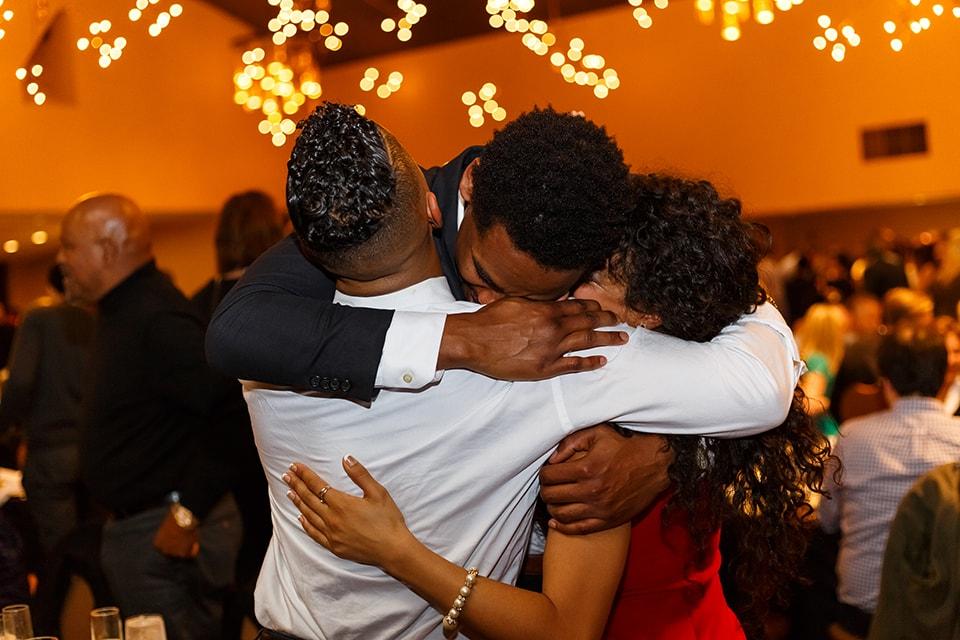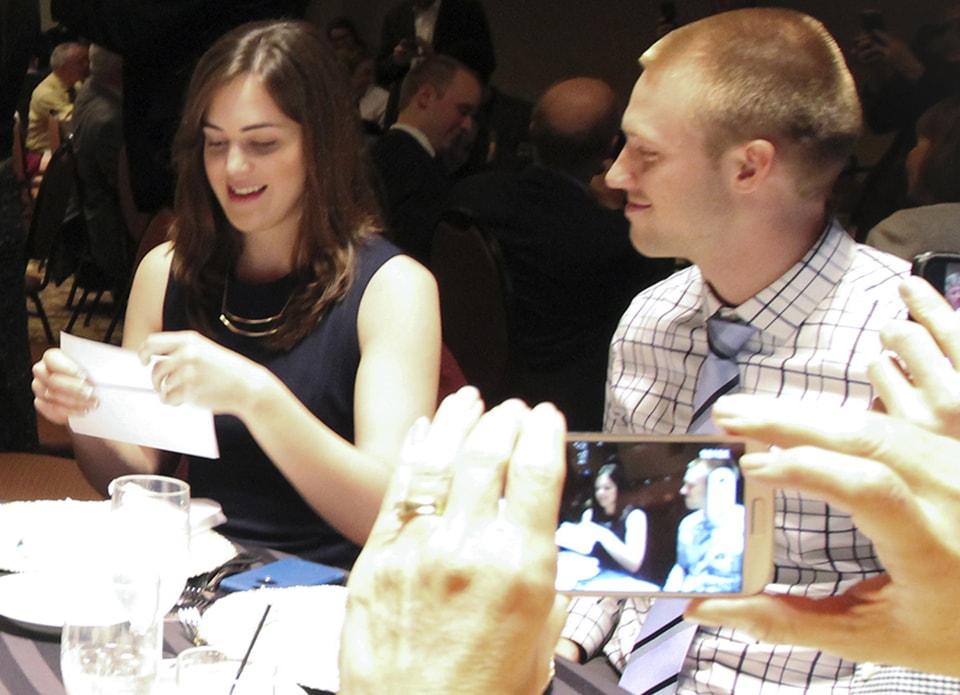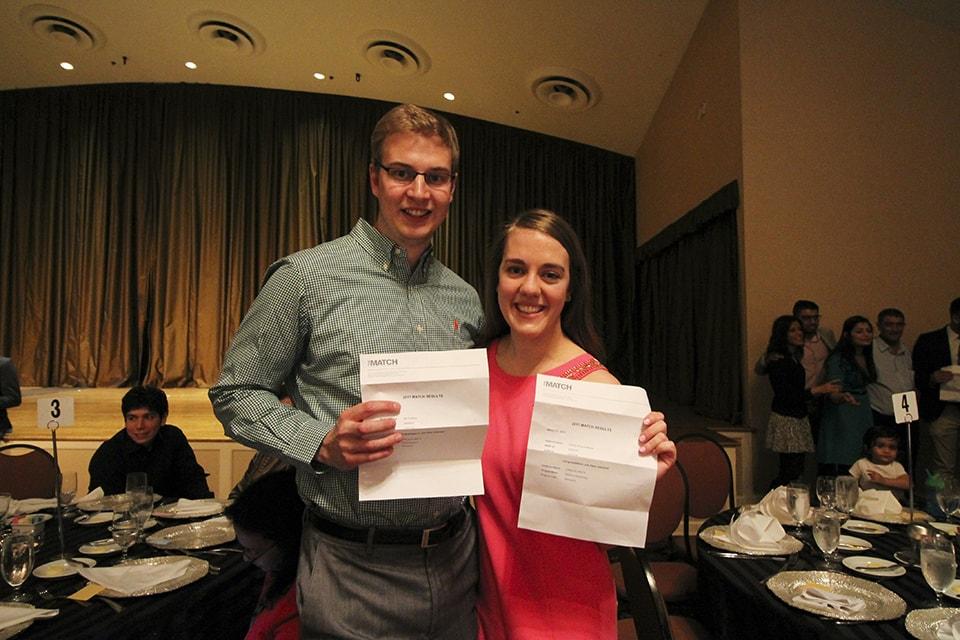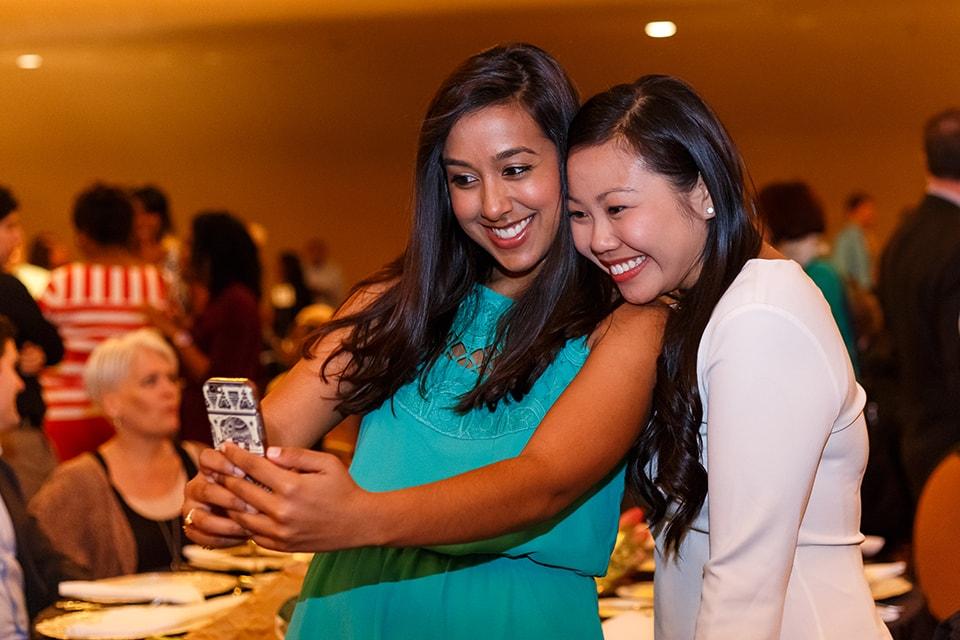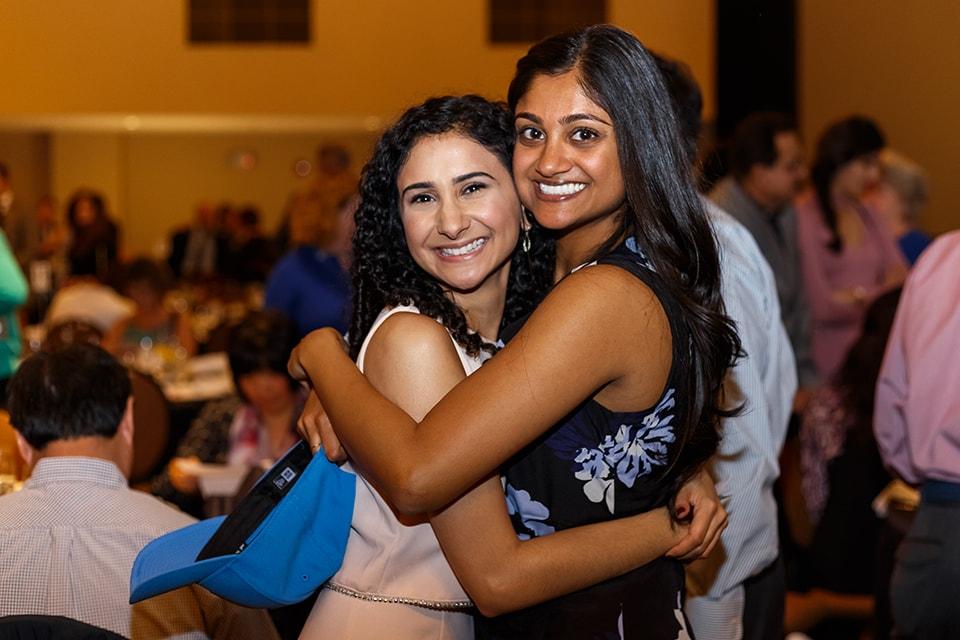SLU Medical Students Celebrate Match Into Residency Programs
ST. LOUIS – Fourth-year students from Saint Louis University’s School of Medicine hoped the luck of the Irish was with them on St. Patrick’s Day as they participated in the National Residency Match Program (NRMP). NRMP annually matches students with their preferred choice for residency.
This year’s class matched into residency programs that included Yale, Harvard, Mayo Clinic, Northwestern University, Vanderbilt, Case Western Reserve, Stanford and UCLA, as well as programs at SSM Health Saint Louis University Hospital and SSM Health Cardinal Glennon Children’s Hospital.
“The match process worked wonderfully,” said L. James Willmore, M.D., associate dean for admissions and student affairs at SLU School of Medicine. “We're pleased with the excellent positions and programs our students obtained. Saint Louis University medical students typically get placements in strong residency programs and this year is no different.”
Zachary Schmitz is heading to Northwestern University to focus on emergency medicine.
"I'm so excited," he said. "This is what I've been working for - I've wanted emergency medicine for a long time. I'll miss the great food and Cardinals games in St. Louis, but I"m ready for this next challenge."
The Class of 2017 took traditional and not-so-traditional routes to medical school. Jarrett Dawson studied fine arts in college and worked in that field before deciding to change careers and attend medical school. He will continue his medical education at SLU as a resident in family and community medicine.
“I was excited by all my rotations in medical school and I looked at surgery, OB/GYN and psychiatry,” he said. “What I love about family medicine is that it is so broad that I will have the opportunity to treat all sorts of different ailments.”
Dawson spent six months after college working for a non-profit in Eastern Congo.
“I came home and I resumed my career in graphic design,” he said. “But I knew I wanted to do something more tangible to improve people’s lives.”
No one in Dawson’s family practices medicine and his degree in fine arts from Missouri State University prepared him for a career in video game design, not medicine. So Dawson began doing clinical shadowing and re-enrolled at Missouri State for two years to get the undergraduate science credits he would need to apply for medical school.
“When I interviewed here, I was struck by the fact that the students and faculty seemed genuinely happy,” Dawson said. “There was a rigorous curriculum and while I’m not Catholic, the Jesuit ideals and shared values matched up with what I wanted to do as a physician.”
As this year’s class began its second year at SLU, Dawson was injured when his motorcycle was struck by a drunk driver who ran a stop sign. He broke his right hand and his left leg was broken from hip to ankle. He spent a week at SSM Health Saint Louis University Hospital and wouldn’t be able to bear weight on his leg for months.
“I knew I was going to be out of commission for a while,” he said. “People suggested I take the year off. I knew that if I had to lay at home doing nothing I would lose momentum and become depressed.”
Dawson said that Greg Smith, Ph.D., assistant dean for student affairs at SLU School of Medicine, took it upon himself to help him stay on course. Dawson studied at home, took exams and was back on track with his class by January.
He said his time as a patient now informs his decisions as a physician, including how he communicates with patients.
“I really want to make sure they understand what’s going on. It can be scary and confusing when you are faced with making medical decisions,” Dawson said. “I try to take my time and find out what questions they have.”
In contrast to Dawson’s path, Corinne Becker headed straight to SLU after graduating from Wake Forest.
“I’ve always wanted to go to medical school,” the Creve Coeur native said. “I knew even before I knew what to call it. I would just tell my parents that I wanted to deliver babies.”
Becker applied for a couples match with her boyfriend Neil Backer. She sought a residency in obstetrics and gynecology; he sought a match in internal medicine. Both are heading to University of Kentucky.
Being close to home was only one benefit to coming to SLU, Becker said. She was struck during her interview by the involvement of the deans and faculty.
“They all know us and they are really invested in helping us to reach our goals,” she said.
During her time at SLU, she volunteered with Labor of Love as a doula for pregnant women in domestic violence shelters.
“Sometimes I would be the only person there in the delivery room to support the mother,” she said. “To get that perspective of being someone’s support person to advocate for them during childbirth was really powerful. I don’t think I would have been able to do it on nights and weekends – our schedule at SLU made it possible for me to volunteer and gain this experience which will stay with me forever.”
Courtney Kaar matched at SSM Health Cardinal Glennon Children’s Hospital. She said she considered surgery but discovered she wanted to specialize in pediatrics her first day working in the outpatient pediatric clinic.
“I texted my husband as soon as I left the clinic and all I got back from him, in all caps was DUH,” she said. “Everyone knew that’s where I should be but me.”
This year's Match Day ceremony was held at the Chase Park Plaza. Students brought parents, friends and family to celebrate with them.
Kevin Behrns, M.D., dean of the School of Medicine, took a moment before the letters were handed out to thank the faculty and families who supported the students through their medical education.
"We want to support you as you transition to this next phase of your career," Behrns told the students. "Residency begins a period of tremendous growth for you. Remember that we are always here to help you.
At 11 a.m., Willmore began calling out names. The envelopes remained sealed until noon when the entire class ripped open their envelopes at once.
Prior to Match Day, medical students rank their preference for specialties and medical institutions. Hospitals and other medical institutions also list their preference for residents. The rank lists are matched, which results in the selection of students for residency positions.
Established in 1836, Saint Louis University School of Medicine has the distinction of awarding the first medical degree west of the Mississippi River. The school educates physicians and biomedical scientists, conducts medical research, and provides health care on a local, national and international level. Research at the school seeks new cures and treatments in five key areas: cancer, infectious disease, liver disease, aging and brain disease and heart/lung disease.


















